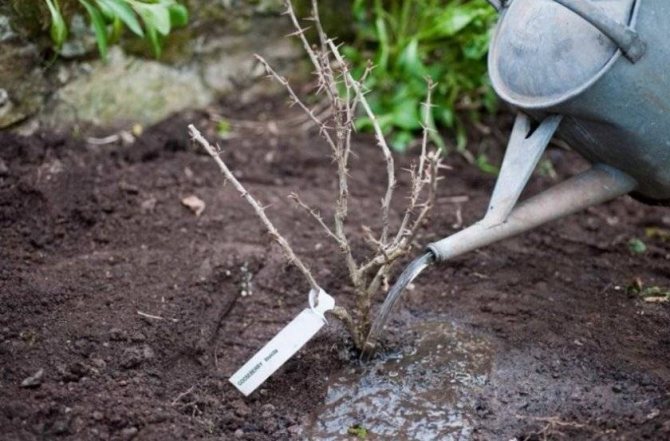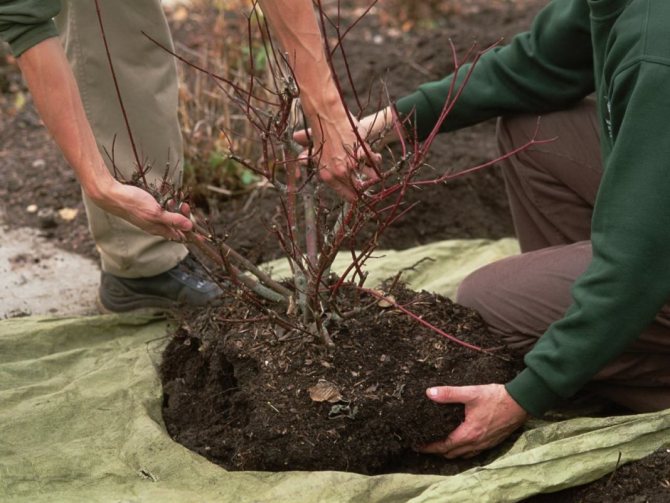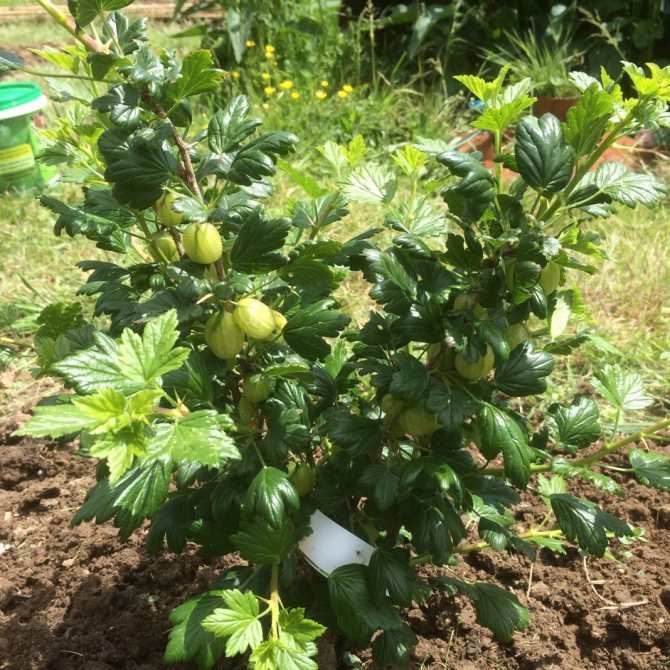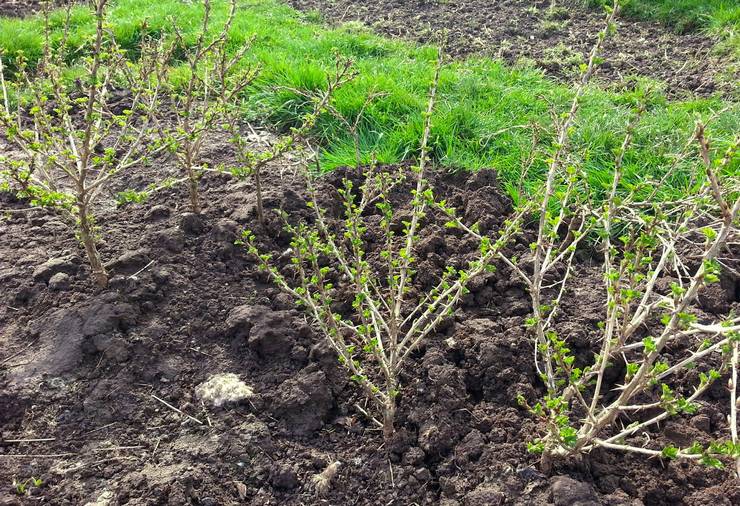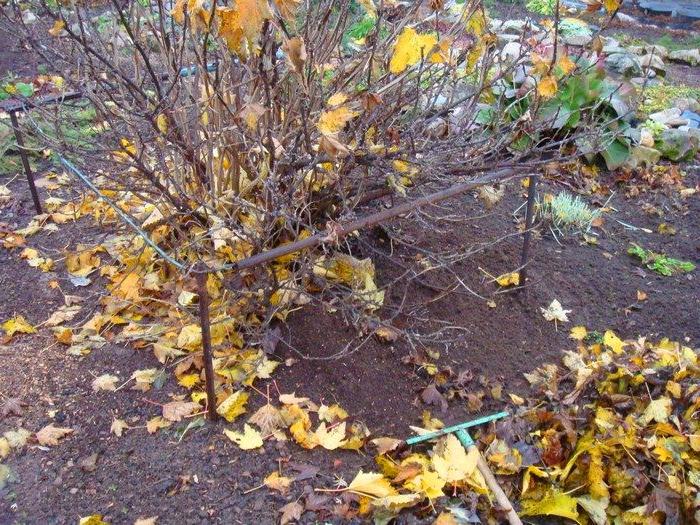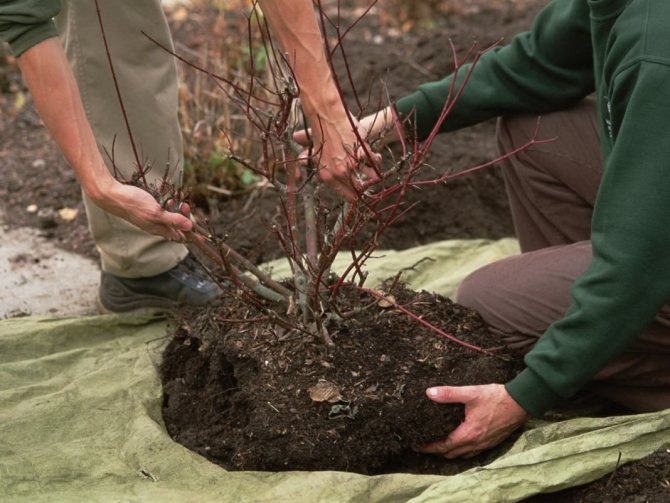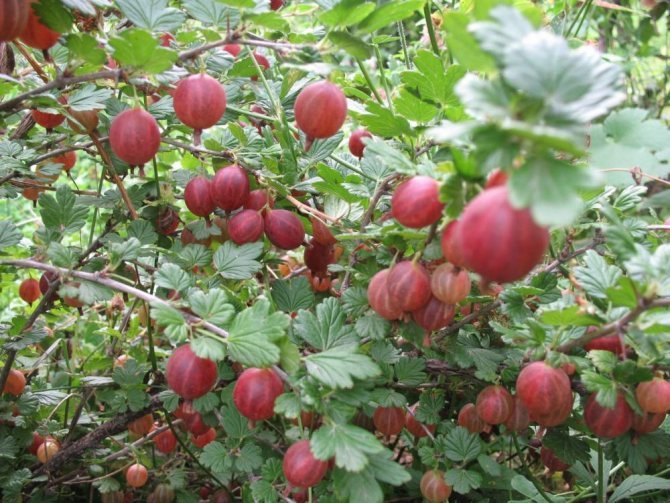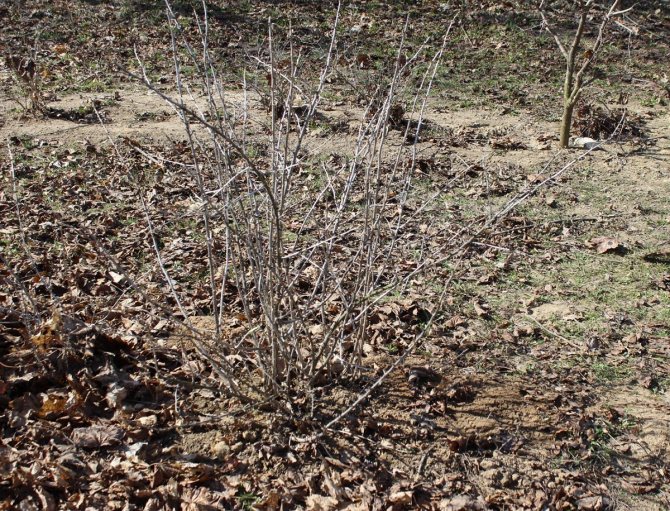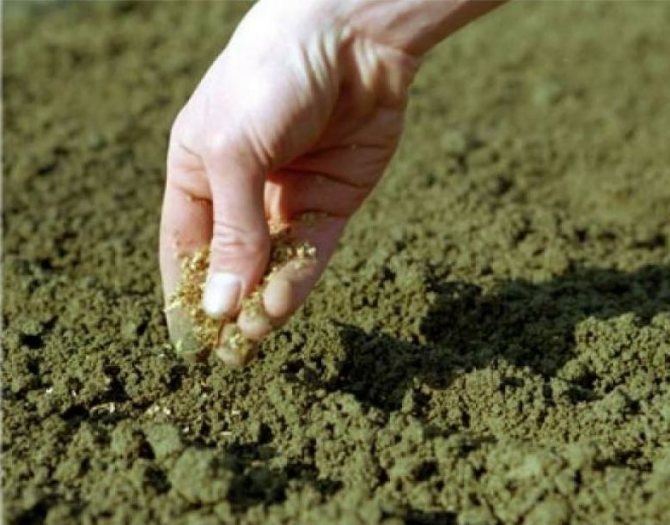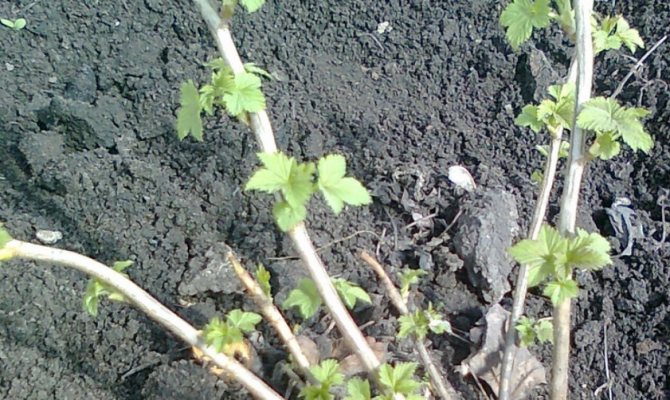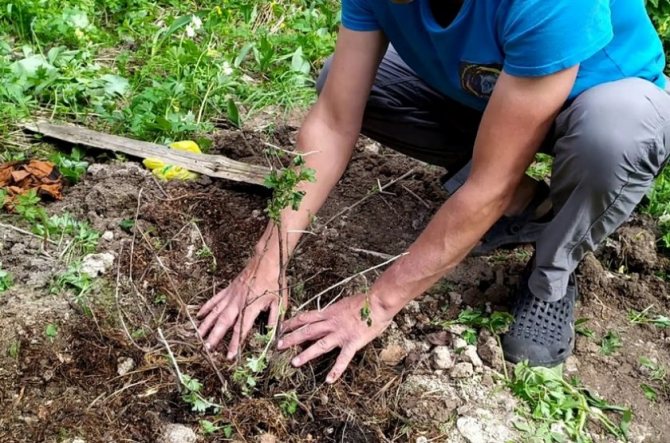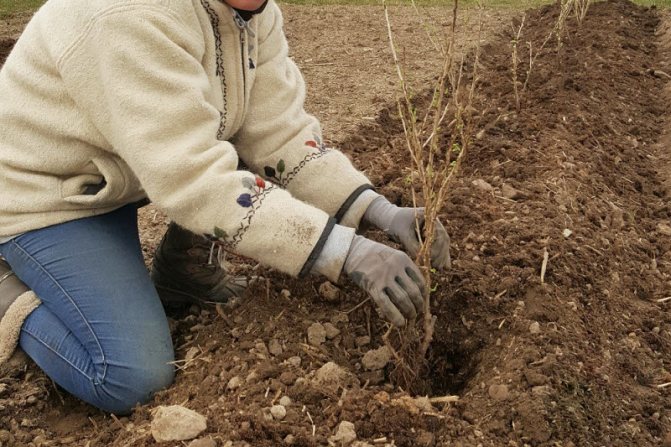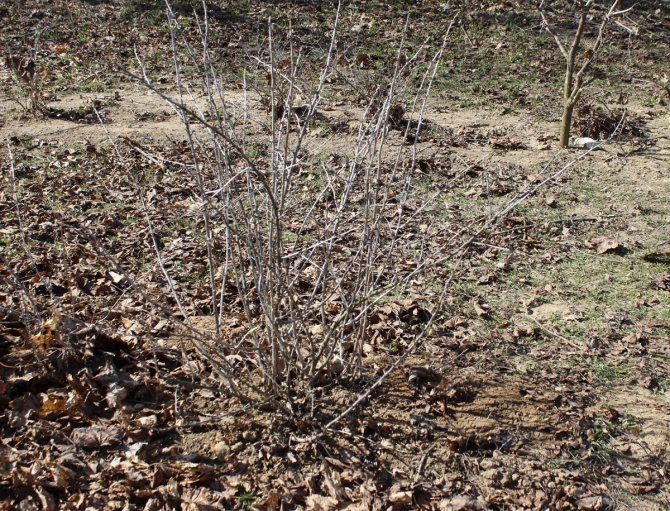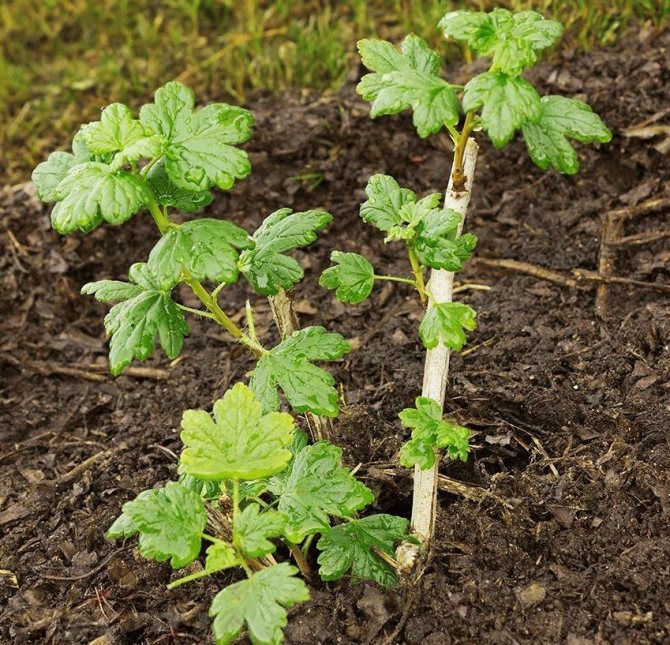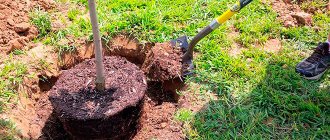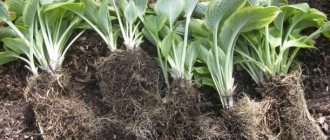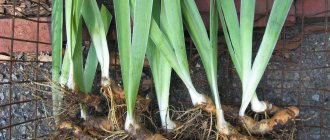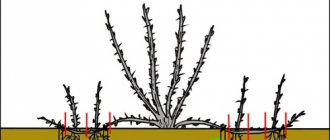Transplantation of shrubs and perennials becomes most urgent in the autumn. Work on the personal plot is not limited to harvesting and preparing the soil for winter. You also need to take care of the shrubs, which are getting cramped in the same place. We are interested in transplanting gooseberries to a new place in the fall, or planting only purchased bushes. There is a certain technology, which will be discussed further.
It is imperative to transplant various plants and shrubs in winter, since the ambient temperature becomes as suitable as possible. In spring, natural and climatic conditions are very unstable, during the day it can be hot up to 25 degrees Celsius, and at night frost can hit and damage all your plantings. It is recommended to do this work in the autumn.
Why do you need a transplant
Reasons for transplanting a gooseberry:
- unsuitable conditions;
- overgrown bushes interfere with each other;
- redistribution of horticultural crops;
- poor productivity, small berries.
The area of the site is limited, so you have to alternate the planting of different plants. If the gooseberry berries are small, then the plant does not have enough light or there is a lot of moisture in the soil. In a new place, in a lighter and more nutritious soil, the bush will be renewed and will bear fruit better.
Too large bushes, encroaching on the space of other plants, need to be thinned and divided, and the seedlings obtained by dividing the bush should be planted in another part of the garden.
Transplanting helps to improve the layout of the site, the condition, the yield of the gooseberry.
Gooseberry transplant: fall or spring?
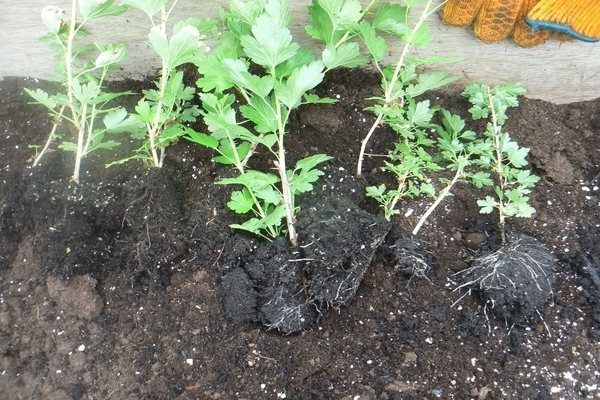
gooseberry transplant
As we said earlier, many summer residents are concerned about the question of what time to choose for the transplant: autumn or spring. In fact, both seasons are good for transplanting. But it is still preferable to choose the autumn period, when the gooseberry has finished its flowering and plunged into a state of dormancy.
This means that the plant will be able to direct all its strength and energy to adapt to a new place. After all, this is not an easy stage in the life of a gooseberry. It is for this reason that many summer residents transplant the plant precisely in the autumn.
You can do a transplant and spring time. But it must be borne in mind that gooseberry buds begin to appear relatively early. Therefore, it is very difficult to find a specific landing date.
A gooseberry transplant is done before bud formation begins. Since this is a difficult period for gooseberries. It will be extremely difficult for gooseberries to adapt and recover during this period. Because all his forces will be directed to begin to form foliage and fruits.
For this reason, adaptation may be delayed. This will lead to slower growth and development of the shrub, which, of course, will affect the quality and quantity of the crop.
Timing recommendations
Spring and autumn are suitable for transplanting gooseberries. But a spring transplant is rarely chosen, since it is difficult to guess the exact time for planting.
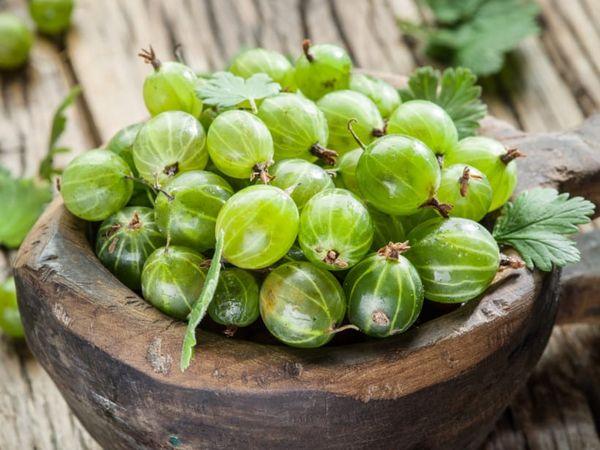

Spring
Gooseberry buds early. Therefore, in the spring it is difficult to seize the moment to transplant the bushes. The plant can freeze from sudden frosts at the end of March, insufficient heating and excessive soil moisture after the snow melts.
When transplanting after the beginning of the growing season, in April, the plant needs time to adapt. This will take away the strength needed for growth and fruiting. If the roots are damaged during transplanting, the bush will not receive enough nutrition for development and may die. If the autumn transplant had to be skipped due to early frosts, then the procedure is postponed to spring.
Fall
Favorable time for transplantation is September and October. After pruning, strong shoots will remain on the bushes. During the winter, the plants will strengthen their positions, and in the spring they will be ready for growing.
In autumn, plants adapt better to new conditions after transplanting, so at this time of the year it is good to transplant gooseberries for reproduction by layering and dividing the bush. A weakened plant will recover faster if transplanted in the fall.


The main mistakes when transplanting
Sometimes inexperience and mistakes can lead to illness or death of the bush. Common mistakes when transferring a bush:
- Transplanting an adult bush like a seedling. Keeping an earthy coma during transplanting greatly increases the chances of a plant.
- Neglect of rooting agents. At the moment, preparations have been developed that help the plant to strengthen the root part.
- Use of cold water. Gooseberry is a thermophilic plant. For irrigation, a liquid with a temperature of at least +18 ° C is used. Cold water, especially on hot days, is detrimental to the plant. Large changes in temperature will negatively affect the culture.
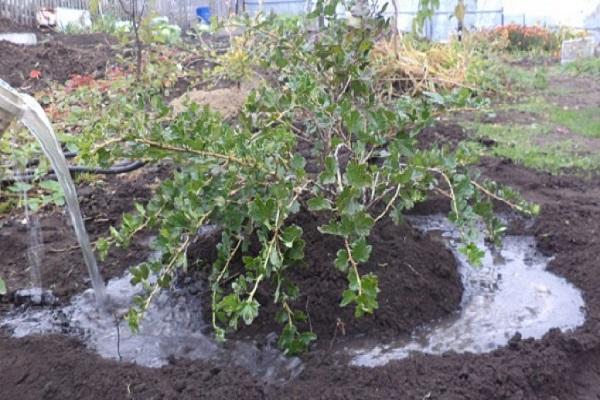

How to choose the right place
Gooseberries, growing in favorable conditions, produce large and sweet berries. Therefore, so that in the new place the yield does not decrease, you need to properly prepare the site.
Crop rotation
According to the rules of alternation of horticultural crops, gooseberries are planted after potatoes, legumes and vegetable crops that deplete the soil a little - radishes, beans, zucchini, corn.
Unfavorable predecessors are raspberries, black currants and cherries. After them, parasites that infect gooseberries remain in the soil. Before transplanting gooseberry bushes, the soil is fed by siderates - clover, lupine.
Illumination
So that excess moisture does not collect on the beds with gooseberries, you should choose a well-lit, elevated area. Outbuildings and nearby trees should not cast a heavy shadow on the gooseberry. Therefore, the bushes should be planted at a distance from them.
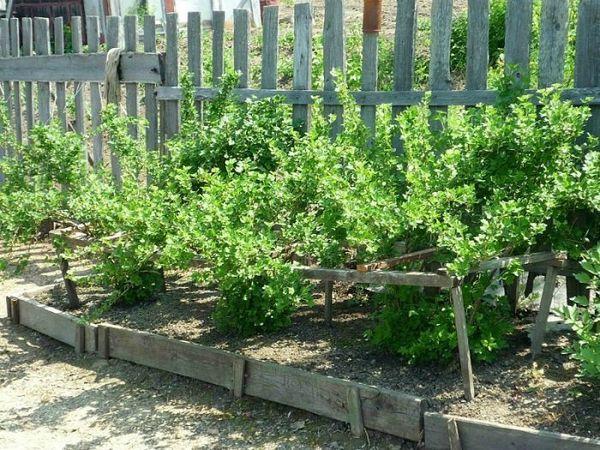

Requirements for neighbors
Tomatoes are useful neighbors for gooseberries that repel harmful insects. The neighborhood with red currants is also favorable. Mint, lemon balm, dill, garlic will protect gooseberries from aphids.
The trees located next to the gooseberry will keep the snow in winter, protecting the soil from freezing.
Windproof
In summer, deciduous neighbors will prevent strong gusts of wind, which accelerate the evaporation of moisture from the soil surface. The optimal distance between them and the gooseberry bushes is 2 meters. The gooseberry will be protected from drafts if it is placed at a distance of 1.5 meters from the fence.
See also
Description and characteristics of the gooseberry variety Ural emerald
To read
Soil
In order for the gooseberry to take root in a new place, the soil must allow moisture and air to pass through, be warmed up by the sun and be easily cultivated.


Ease
Light loam, sandy loam - a favorable environment for plant growth. Clay should be added to sandy soil to retain moisture better. Heavy clay soil will waterlogging the area and fungus can attack the bushes. With the addition of sand, clay soil will warm up better and allow air to pass through.
Acidity
For gooseberries, a low acidity is suitable - 6.5. Soil with high pH should be dug up with lime, chalk, and wood ash, which will serve as an additional source of calcium, phosphorus and potassium.With an acidity below 6, gooseberries yield small, sour berries.
Fertility
Gooseberries love potassium soil. Before transplanting, the land must be cleared of plant residues and weeds, loosened and dug up with organic fertilizers. Their consumption is 2-4 kilograms per square meter of the garden.
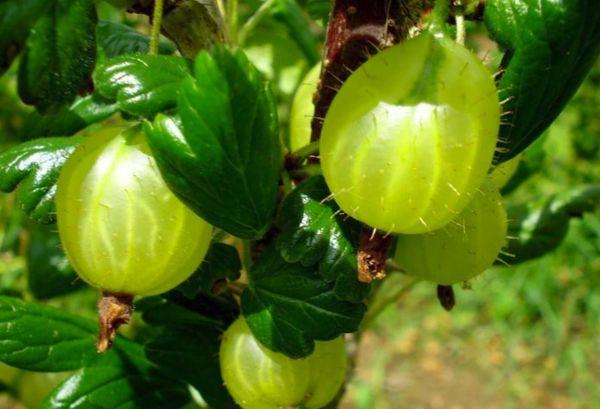

30 grams of urea, 50 grams of superphosphate and 20 grams of potassium chloride are added to poor soil.
Selecting and preparing a landing site
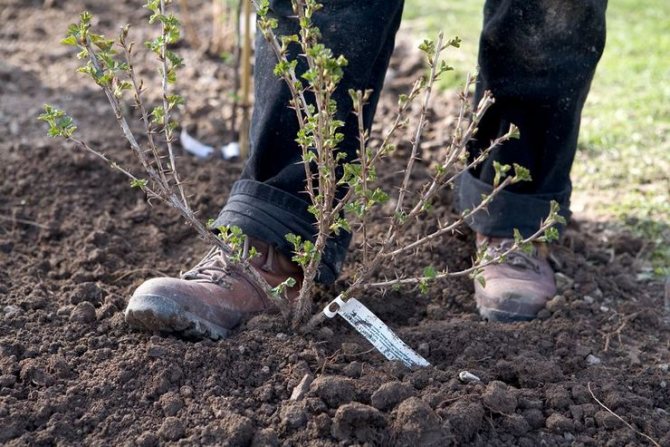

In order for the gooseberry bush to take root well and bear fruit regularly, you need to choose the right place for it.
It must meet the following requirements:
- Good sunshine.
- There is no constant wind blowing. Plants feel good near any buildings that protect them from drafts.
- The gooseberry loves moist soil, but does not tolerate the close occurrence of groundwater and stagnant water. A place on an area where rainwater is poorly absorbed by the soil does not suit the bush.
- Gooseberry bushes grow well on fertile and light soils, react negatively to an acidic environment. If the soil is too acidic, it can be deacidified with ash or lime. Clay soil is fertilized with sand, humus or peat.
- Gooseberry precursors should not include raspberries or currants. These plants are susceptible to the same diseases, so the bush will be sore and stunted.
You should first clear the planting site of debris, weeds and other vegetation.
How to determine the acidity of the soil?
The easiest and fastest way to determine the acidity level is with litmus paper. If you don't have it, the folk method will help. It is necessary to pour a handful of cherry leaves in a jar with boiling water and wait for the infusion to cool. After that, a lump of earth is thrown into the jar from the place where the acidity needs to be determined.
Look at the color of the water:
- Greenish tint - normal acidity.
- Reddish - increased.
- Bluish - lowered.
Transplant methods to another place
The gooseberry bush is transplanted in two ways - with an earthen clod and a seedling with open roots. The planting technology is the same, but the seedlings take root worse.
With a lump
How to transplant a whole bush:
- dig a hole 50 centimeters deep the day before planting;
- water it abundantly by pouring out 4 buckets of water;
- before planting, put drainage on the bottom of the pit - pebbles, chipped brick, crushed stone with a layer of 5-10 centimeters;
- the top layer of the excavated earth is mixed with compost, 200 grams of superphosphate, 300 grams of wood ash are added and the mixture is poured into the pit;
- cut dry, damaged branches from the bush, shorten young shoots by a third;
- dig in a bush at a distance of 30 centimeters from the base;
- if the roots have spread further, they need to be chopped off;
- take out with a shovel together with an earthen lump on the roots;
- transfer the bush to the prepared hole;
- the plant is covered with the remaining earth with compost, tamped;
- a near-stem roller is poured a little more than a crown wide and 10-15 centimeters high.
The transplant ends with watering and mulching: you need to gradually pour out 3 buckets of water of 10 liters each and pour dry soil and peat crumbs onto the root area.
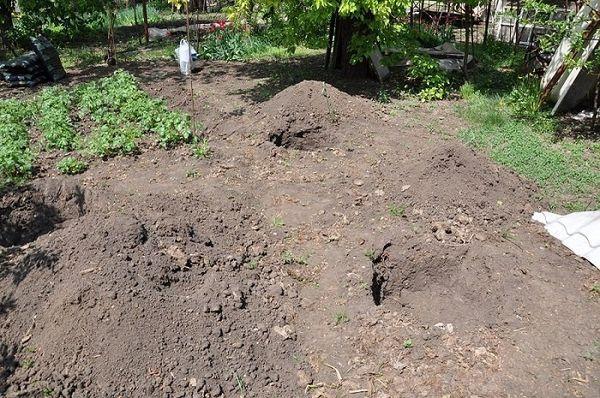

The bush must be installed so that the beginning of the roots is 5 centimeters below ground level. To save a lump of loose soil, you need to tie the base of the plant around with burlap or agrofibre, then pry it from below with a shovel.
Pre-pruning balances the crown and roots and promotes the renewal of the bush. It is smaller and easier to transport. The earth ball protects the roots from damage. They quickly get food from the soil, the bush grows and releases new shoots.
Saplings
The method is used to propagate gooseberries by dividing the bush. A seedling with open roots cannot be stored for a long time. Plants freed from their native earthen coma take root worse in a new place. Therefore, transplanting with seedlings is carried out only in the fall.
See also
Description of Beryl gooseberries, planting and care features
To read
For better survival, the plant should be kept in a rooting solution. Before installing in the planting hole, the roots must be straightened so as not to damage the filled earth. If the seedling is shaken lightly, the potting mix will be evenly distributed between the roots. After adding earth, you can water the plant a little, and again pour the earth. So the soil is evenly compacted, it does not need to be strongly compacted.
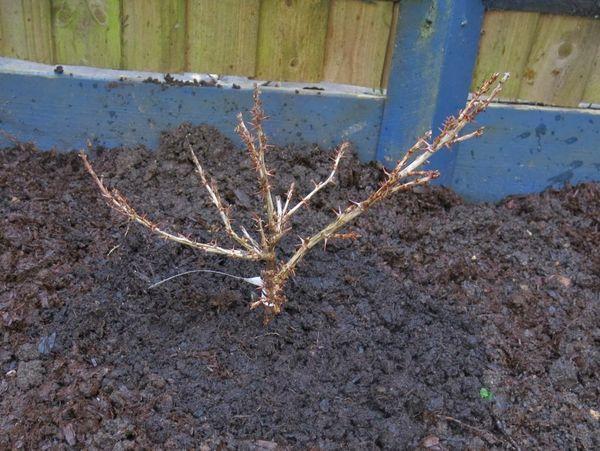

Follow-up care
For growth and fruiting, established bushes need nutrition, moisture and pruning.
Mulching
Mulch will retain moisture, protect against weeds and parasites. A layer 10-15 centimeters thick allows water to pass through, but retains light. In such conditions, weeds hardly disturb the gooseberries. Dandelions and wheatgrass grow without mulch, they weaken the plant.
For coating use:
- dry peat crumbs;
- crushed humus;
- sawdust;
- bark;
- chips.
Coniferous sawdust increases the acidity of the soil, so gooseberries are mulched with sawdust from deciduous trees. For the winter, the trunk circle is covered with dried grass, hay, leaves.
Watering
The gooseberry has a well-developed root system. The plant is sick from excess moisture. A gooseberry bush transplanted in spring, in June, has enough moderate watering 2 times a week in the absence of rain. In July, watered once every 2 weeks. In the heat, sprinkling is carried out - spraying the leaves with water. Watering should be done in the morning or evening.
In autumn, the final watering is carried out at a temperature of 8 degrees Celsius. 50 liters of water are poured under the bush. Abundant moisture will protect the soil from freezing.
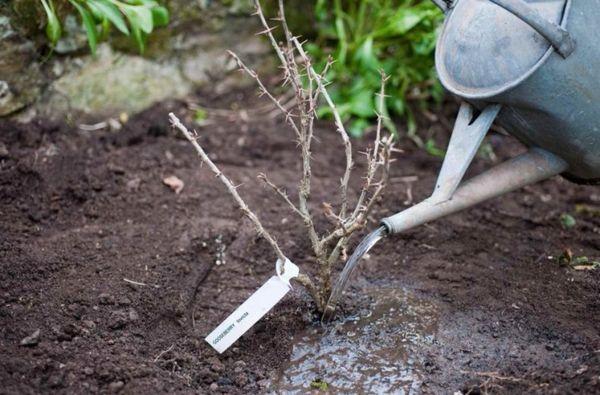

Top dressing
Gooseberries take root in spring in 20-30 days. 2 weeks after the buds bloom on the transplanted bush, nitrogen fertilizer is applied. It promotes crown growth. An organic source of nitrogen is chicken manure. 10 liters of his infusion is poured under a bush. The mulch is pre-removed.
Liquid organic and inorganic fertilizers are absorbed faster. Before applying top dressing, the gooseberries need to be watered, and then evenly distribute the nutrient substrate or infusion along the near-stem circle. You can also use microflora fertilizers. But they are not compatible with mineral substrates, as minerals destroy microorganisms.
At the end of June, you can feed the gooseberries with potassium. The substance retains moisture, and plants will better tolerate heat.
Compost and organic matter are introduced in autumn. Phosphate-potassium fertilizers strengthen the roots. After the autumn transplant, the first spring fertilizers are applied when the buds bloom. The bushes are fed with urea, having previously loosened the ground under them.
Pruning
Branches damaged during transportation of the bush must be cut off after planting. Broken shoots will not grow together.
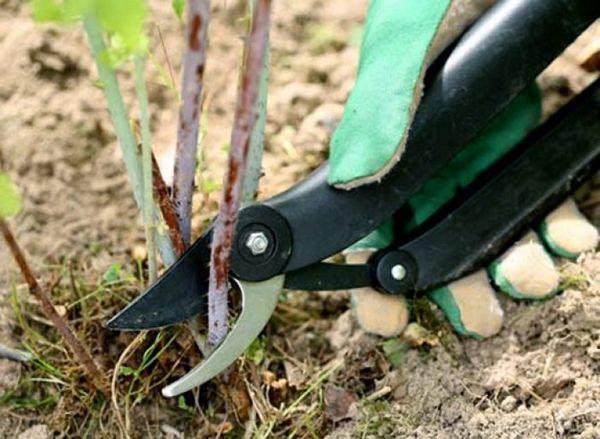

If an old shrub is transplanted for rejuvenation, it needs to be pruned every year. Before wintering, old branches are removed, leaving 6-8 young shoots.

